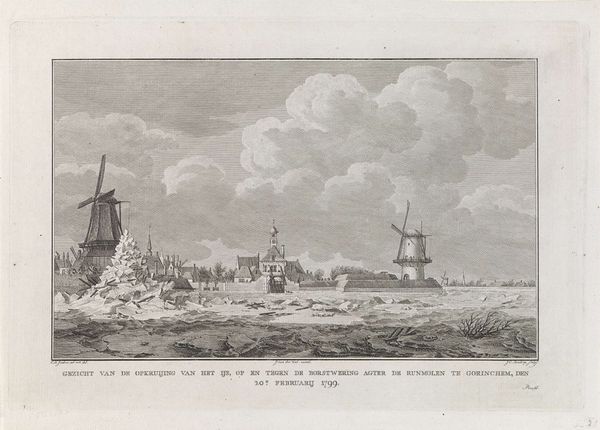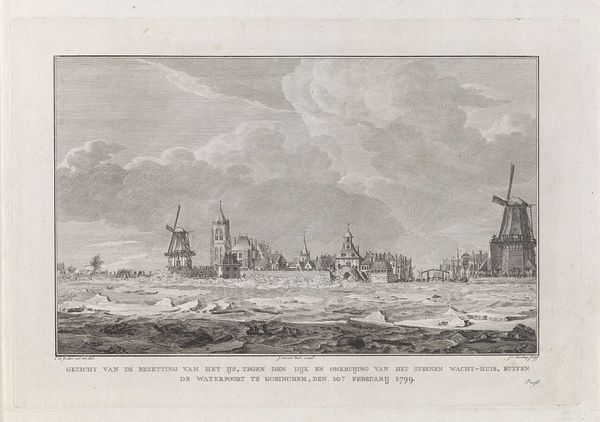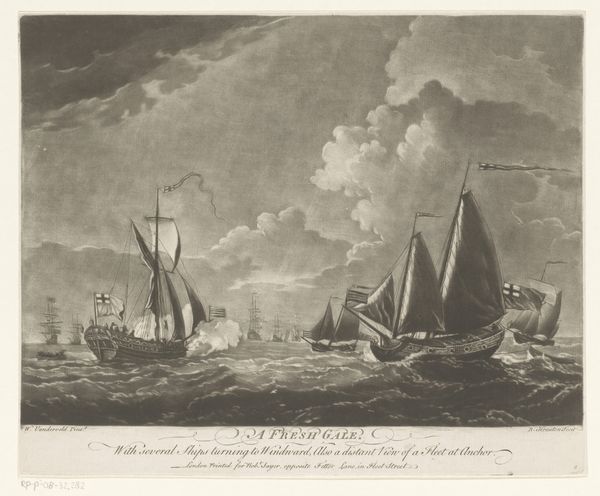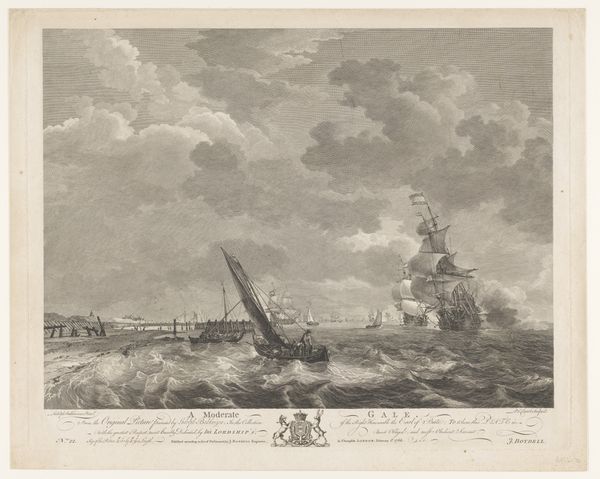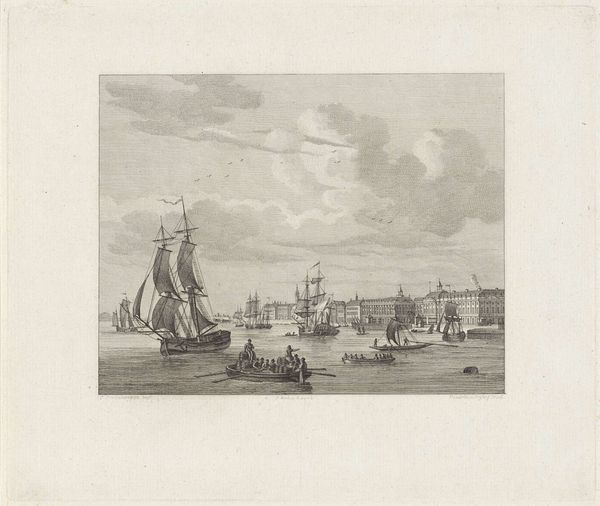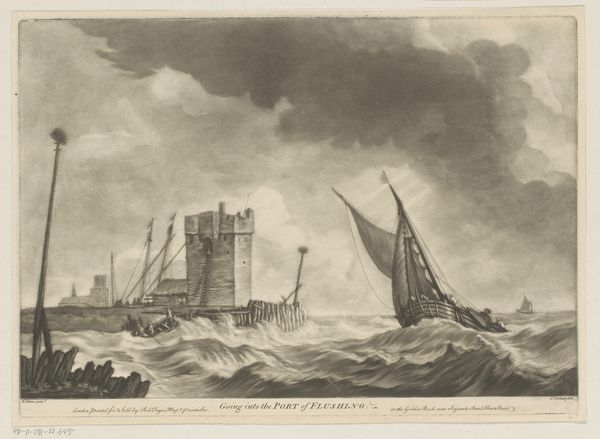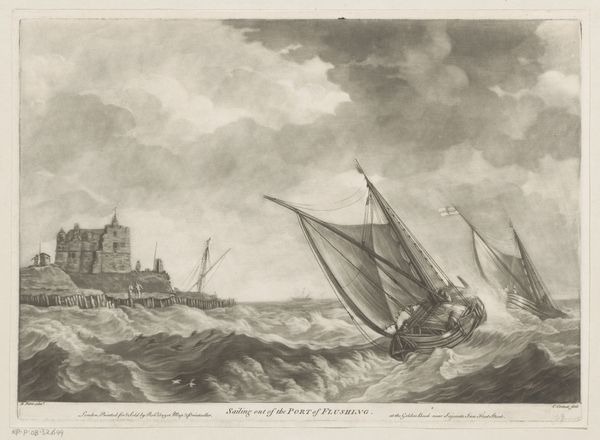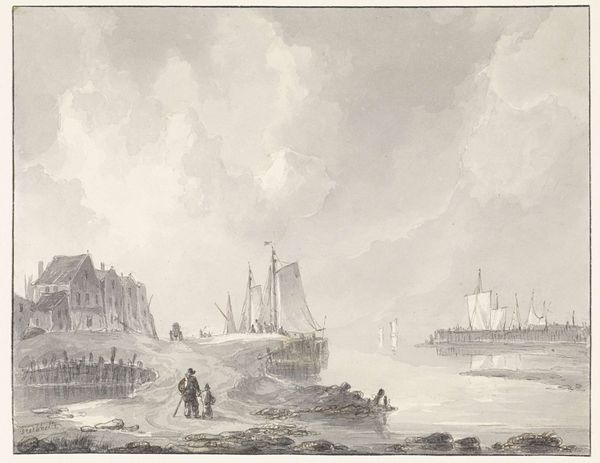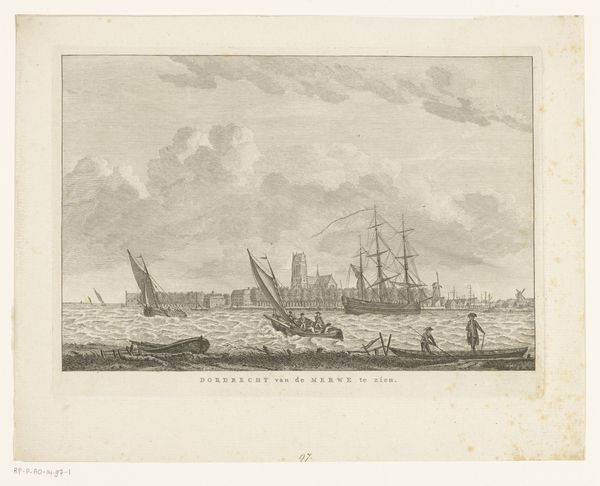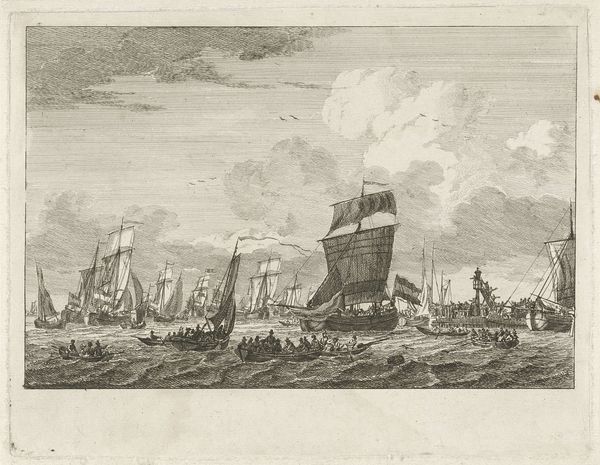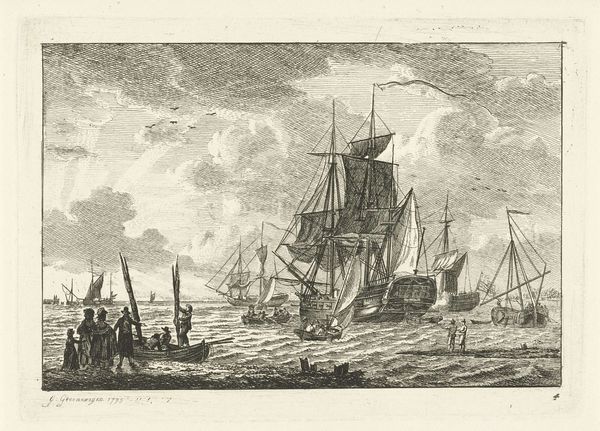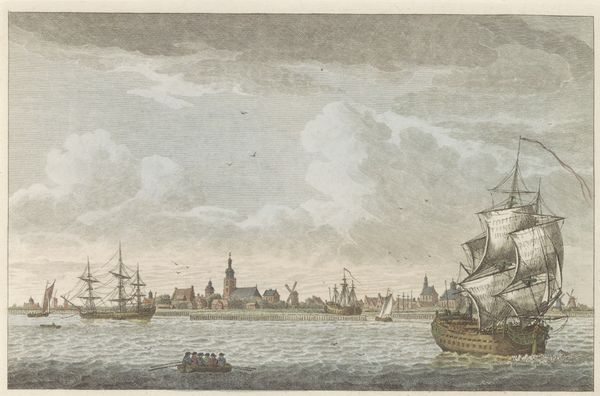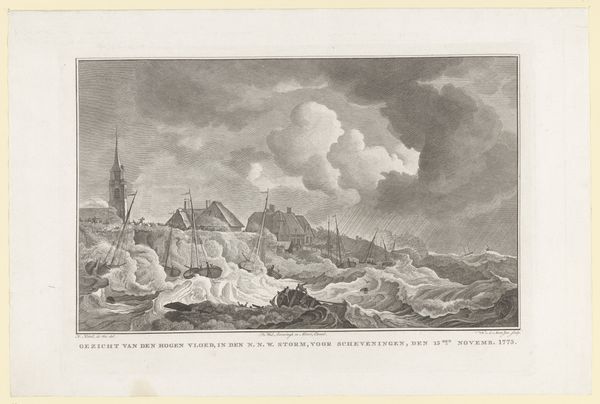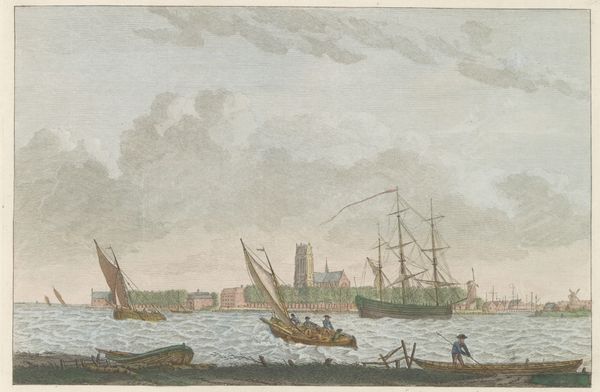
Gezicht van de opkruijing van het ijs, op en tegen de borstwering agter de Runmolen te Gorinchem, den 20.n Februarij 1799 1807
0:00
0:00
print, watercolor, pencil
# print
#
landscape
#
watercolor
#
romanticism
#
pencil
#
cityscape
#
watercolor
Dimensions: height 448 mm, width 608 mm
Copyright: Rijks Museum: Open Domain
Editor: Here we have Cornelis de Jonker's "Gezicht van de opkruijing van het ijs, op en tegen de borstwering agter de Runmolen te Gorinchem, den 20.n Februarij 1799," created in 1807 using pencil and watercolor. What strikes me is the stillness in the cityscape juxtaposed with the dynamism of the ice piled against the fortification. What do you see in this piece? Curator: It's fascinating how the frozen water transforms from a hazard into almost a monument, isn’t it? For me, the key lies in understanding the visual language surrounding windmills and waterways in Dutch art. The windmill, traditionally a symbol of prosperity and human ingenuity in controlling the elements, here stands alongside the powerful, destructive force of nature. Editor: That's interesting. I hadn't considered the windmill's symbolic meaning. The looming sky almost amplifies the power of nature in this scene. Curator: Absolutely. Notice the specific date in the title. This isn't just a landscape; it's a historical record, capturing a moment of extreme weather. The frozen water is an emblem of hardship, but the town persists, representing resilience. Are there any specific images that strike you in that way? Editor: Definitely, that buildup of ice really communicates both the chaos of nature and the town's ability to survive. It speaks to human limitations but also perseverance. Curator: Precisely. And this duality is essential to understanding the romanticism evident in the piece. What initially reads as a simple landscape becomes a powerful statement about the relationship between humanity and the environment. Editor: This piece invites viewers to delve into symbols of nature and understand the dynamic play between ruin and strength that it represents. Curator: Indeed. The piece reveals how even seemingly objective records carry embedded cultural meanings and speak volumes about how people view themselves in relation to the forces around them.
Comments
No comments
Be the first to comment and join the conversation on the ultimate creative platform.
